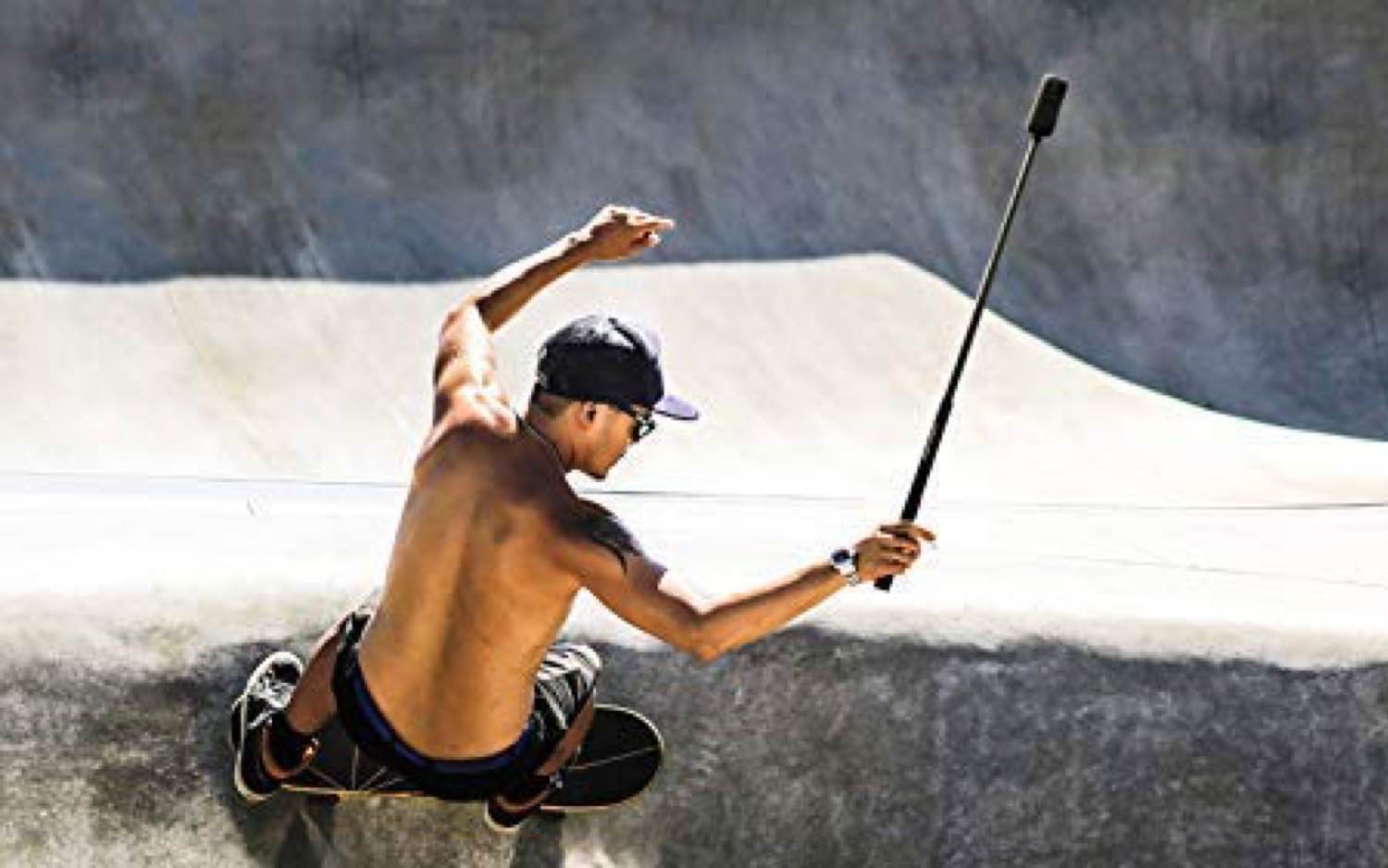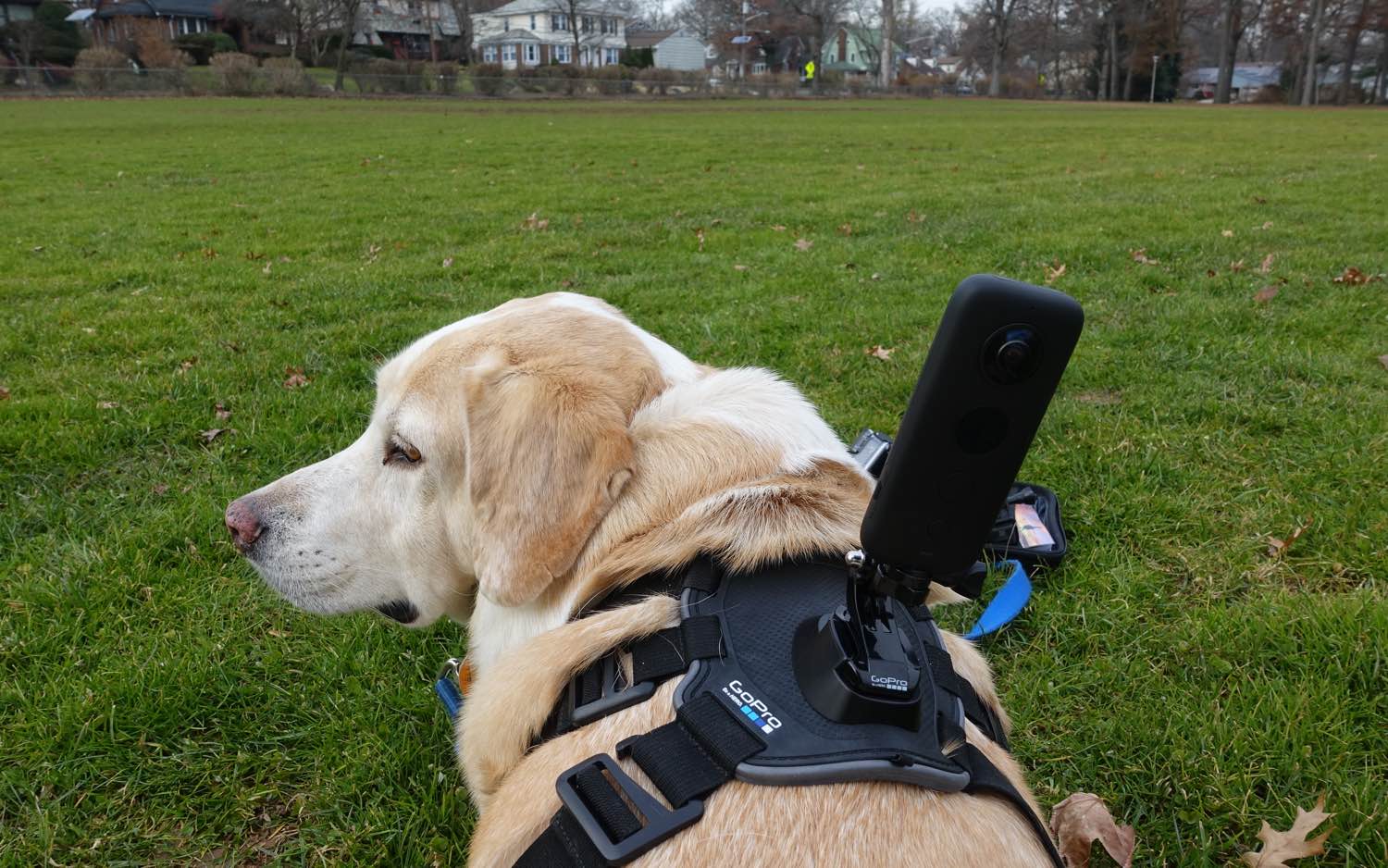Insta360 OneX vs. DJI Osmo Pocket: Which Has the Smoothest Video?
We tested the electronic image stabilization of the Insta360 OneX versus the mechanical image stabilization of the DJI Osmo Pocket.
Anyone who's used an action camera while running, skiing or doing anything that involves a lot of movement knows that the resulting video can be bumpy. Anyone watching will instantly get motion sickness as the horizon rocks back and forth.

Two new cameras, the Insta360 OneX and the DJI Osmo Pocket, both claim to eliminate this jitteriness, but do so in very different ways. I put them to the test to see which makes the smoothest video.
DJI Osmo Pocket vs. Insta360 OneX Specs Compared
Both cameras have a similar stick-like shape and record to microSD cards. While both cameras have only two buttons, the Osmo Pocket offers more on-camera controls, thanks to its small but navigable color touch screen.
How they stabilize video
The Insta360 OneX has two cameras that can capture images and video in a 360-degree sphere. Because the cameras are fixed in place, it takes a software-based approach, using what it calls FlowState Stabilization to smooth its video. Taking advantage of the fact that it records everything around it, it can keep the horizon level, and not have to worry about cutting off sections of the image if it tilts too far to the left or the right.

The DJI Osmo Pocket uses hardware — a 3-axis gimbal — to ensure that its video is smooth. As the body of the camera moves, the Osmo Pocket's gimbal adjusts itself so that the camera lens remains level with the horizon.
Image stabilization performance
To test both cameras, I attached them to a GoPro harness on the back of my dog, Hunter, and took him for a run; he was more than happy to help. It was an overcast day, so lighting conditions weren't the best, but it was still bright enough to see things clearly.

First, here's what the video would look like without stabilization.
Get instant access to breaking news, the hottest reviews, great deals and helpful tips.
Using Insta360's beta desktop app, you can turn FlowState on and off. Here's the same video, but with FlowState turned on.
Next, here's the image-stabilized video from the DJI Osmo Pocket.
Both cameras handled Hunter's movements exceptionally well. The horizon remained level throughout the run. The Insta360's video felt a little more wobbly, but not by much. The one thing that both cameras had trouble with — if you could even call it that — is that there's a slight bumpiness when Hunter's paws land on the ground.

In terms of quality, I preferred the video from DJI's camera; it was brighter and more detailed. I could make out the stitching on my jeans, and the blue in Hunter's leash popped more.
MORE: Best 360-Degree Cameras (Including 4K and Mobile ...
However, DJI's camera has a much narrower field of view — 80 degrees, to the Insta360's full spherical video. As a result, you can do much more with the latter, such as changing what it is you're looking at, widening or shrinking the field of view, or tracking individuals.
Bottom line
So which camera would I rather use for shooting stabilized video? It depends on what you want to do. I prefer the quality of the video from the DJI Osmo Pocket; its image sensor is better able to compensate for less-than-ideal lighting conditions. However, you can simply do more stuff with the 360-degree footage from the Insta360 OneX.
Credit: Tom's Guide

Michael A. Prospero is the U.S. Editor-in-Chief for Tom’s Guide. He oversees all evergreen content and oversees the Homes, Smart Home, and Fitness/Wearables categories for the site. In his spare time, he also tests out the latest drones, electric scooters, and smart home gadgets, such as video doorbells. Before his tenure at Tom's Guide, he was the Reviews Editor for Laptop Magazine, a reporter at Fast Company, the Times of Trenton, and, many eons back, an intern at George magazine. He received his undergraduate degree from Boston College, where he worked on the campus newspaper The Heights, and then attended the Columbia University school of Journalism. When he’s not testing out the latest running watch, electric scooter, or skiing or training for a marathon, he’s probably using the latest sous vide machine, smoker, or pizza oven, to the delight — or chagrin — of his family.
